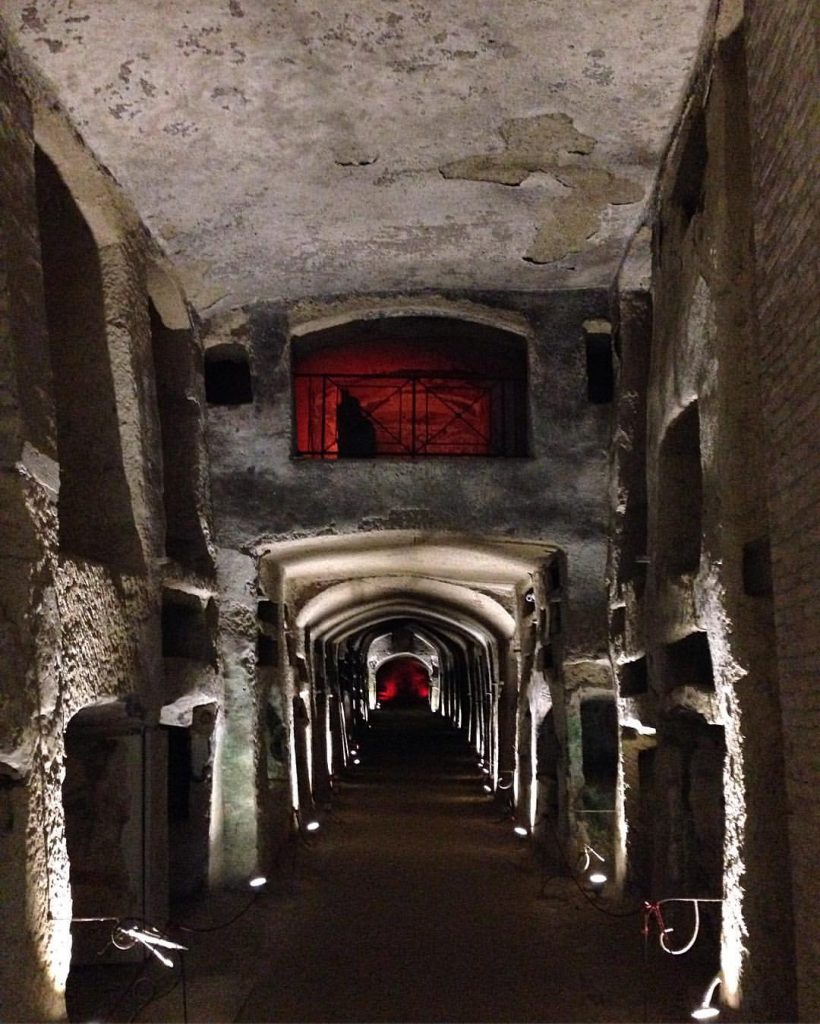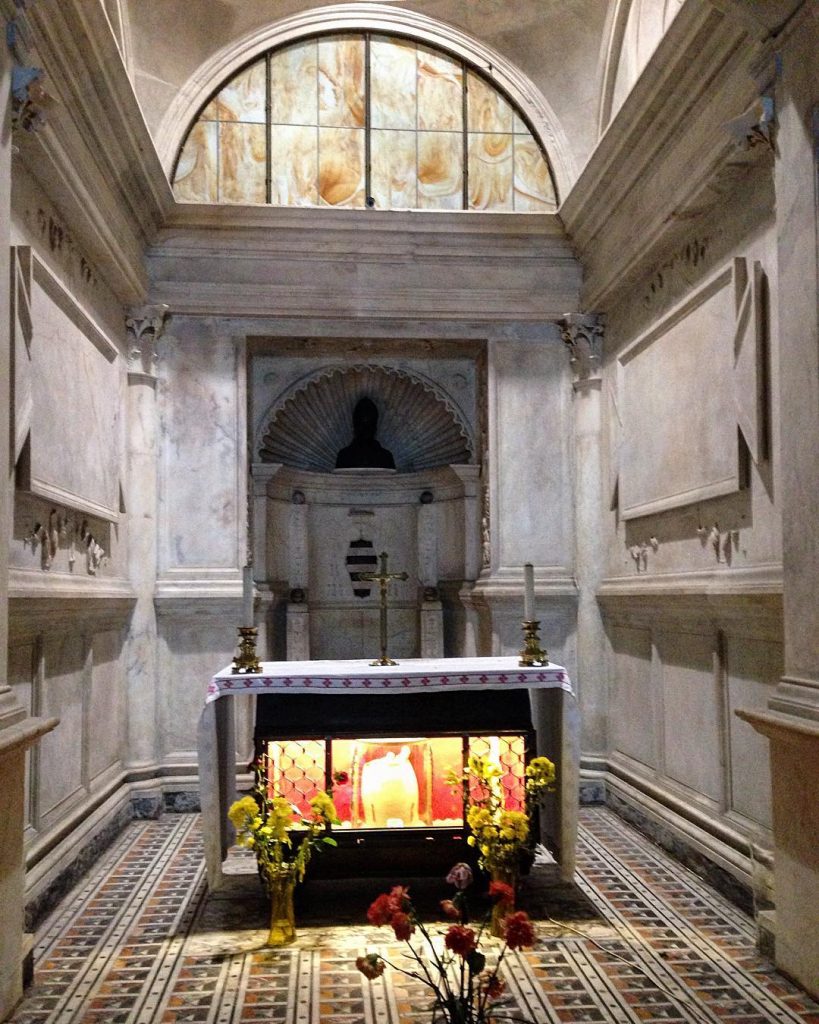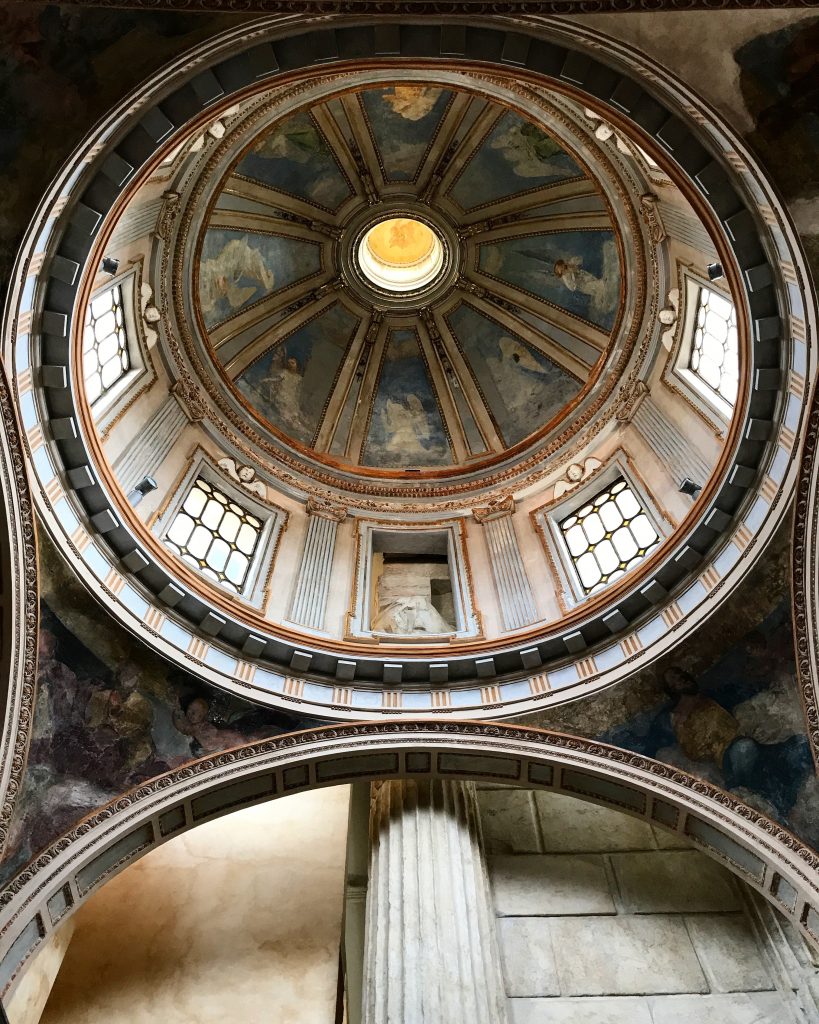BLOOD SIMPLE
By:
September 19, 2021
One in a series of posts about Naples, by HILOBROW friend Wayne Chambliss.
BLOOD SIMPLE | MONMOUTH STRIKES AGAIN | LOVE’S LABOUR’S MISLAID | THE EXPERIMENTALIST | ALWAYS SOMEWHERE ELSE | ARE YOU A CHICKEN? | HAMMER OF THE GOTHS | PLACES OF THE HEART.

In 305 AD, authorities tried to put the Bishop of Naples, Januarius I of Benevento, to death by feeding him to lions in the Flavian Amphitheater of Pozzuoli, just east of the city. The cats wouldn’t cooperate, however, lying down at the prisoner’s feet instead (a scene depicted by Artemisia Gentileschi in a peculiar painting mounted almost too high to see in the even-more-peculiar Basilica of San Procolo martire, which engulfs the ruined Temple of Augustus — but I digress).
Januarius (Gennaro, in Italian) was transported from the colosseum to the crater rim of Solfatara in the Phlegraean Fields, where he was decapitated. His head rolled down the side of the volcano. Where it landed, a church was built. The remains were originally entombed in a catacomb beyond the city walls (now beneath the neighborhood of Rione Sanità). They were subsequently disinterred, scattered, and only recollected a thousand years later — along with some of the saint’s dry blood — in the Duomo of Naples (i.e., the Cathedral of San Gennaro).* His bones are stored under the main altar, in a small subterranean crypt called the Chapel of Succorpo (“His body”).

Three times a year (down from eighteen in past centuries!) — including September 19th, Gennaro’s feast day — priests reunite the bones with his skull — which is stored elsewhere, encased in a lavish silver bust — and an ampoule of the dried blood. Many, many thousands of Neapolitans gather to watch the blood’s still-inexplicable liquefaction at these ceremonies. It usually happens once the skull is made to kiss the vial.
On those rare occasions when the blood doesn’t change phase, something dire tends to happen to the city: plagues, invasions, volcanic eruptions. So, yeah, correlation does not causation make, but even the fourteen agnostics in Naples root for the miracle. Outperforming most Twitter futurists, the blood failed to liquefy prior to the 2016 U.S. Presidential election. And it failed to do so again in December, 2020. Which cannot account for this year we’re having, but clearly anticipated it.

* For thirteen centuries, supposedly, a monumental bronze horse created by Virgil (or, more precisely, by his Neapolitan folk avatar, Virgilio Mago) stood in the piazza where the Cathedral of San Gennaro would eventually be built. The statue was believed to have magical properties: a horse led around it thrice would be cured of infirmities. It was eventually sabotaged by some angry veterinarians, who drilled a hole in its flank to empty it of curative magic (which was bad for business, obviously). It was further defaced by the Hohenstaufen king Conrad IV, who had the following inscribed upon it: Hactenus effraenis, domini nunc paret habenis Rex domat equum. Parthenopensis equus. In my friend Eric’s translation: “Hitherto unrestrained, the King has now caused the horse to be subject to the reins. Naples is the horse.” It’s worth noting the Corrado-shaped hole in Dante’s Comedy. His father (HRE Frederick II), his half-brother Manfred, and his son Conradin are all there, but no mention of Conrad IV. Curious. Anyhow, in 1322 the Catholic Church melted down Virgil’s horse and made the second bell of the Duomo from it. Twenty-seven years later, an earthquake collapsed the bell tower, shattered the bell, and that was that. Naples.
ALSO SEE: Wayne Chambliss on RADIOACTIVE TRINITITE | THE RIDE-ALONG | MATRYOSHKA CHEST. Tom Nealon on JENSON’S ROMAN | GARUM | POSCA. Joshua Glenn on BEASTLY NUISANCE (ARGONAUTICA) | James Parker’s bastardizations of THE KALEVALA | Matthew Battles on ALDINE ITALIC | Toby Ferris on ANATOMY OF NORBITON: AETIOLOGICAL | Flourish Klink on THE LIFE AND DEATH OF PATROCLUS SON OF MENOETIUS | Gordon Dahlquist on FELLINI SATYRICON.
